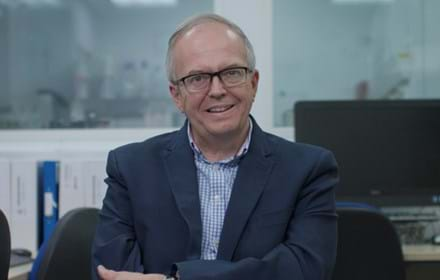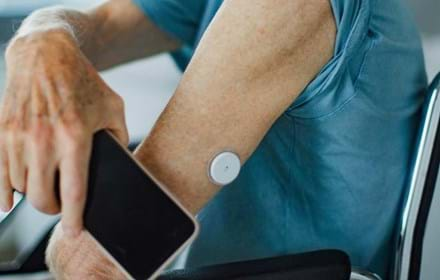
"three fantastic scientists" on islet cells - European Pancreas and Islet Transplantation Association Symposium - Blog Report from Day 2
The second day of the 11th EPITA Symposium and 40th AIDPIT Workshop dawns bright and early at my kitchen table, beginning with a plenary session on islet cells.
Not only was this session sponsored by the DRWF, but it also featured three female presenters, described by the chair of the session as “…three fantastic scientists”. And among them was Dr Chloe Rackham, herself a DRWF Professor David Matthews Non-Clinical Fellow with her talk entitled “Optimising islet beta cell function through Mesenchymal Stromal Cell mediated mitochondrial transfer”
Her elegant presentation focused on mitochondria, the powerhouses of the cell that are responsible for glucose metabolism and energy production and demonstrated that human mesenchymal stem cells are capable of transferring mitochondria to human islet beta cells when cultured in the same environment. In fact, this transfer is more extensive to human islets than to mouse islets indicating possible species differences that may be explained by differing levels of islet mitochondria depletion and islet cellular stresses post-isolation.

She concluded that ensuring optimal mesenchymal stem cell-derived mitochondrial transfer could be utilised to maximise the therapeutic efficacy of these cells leading her to suggest that co-transplantation and co-culture strategies might improve the efficiency of clinical islet transplantation.
Later in the day, a lively debate took place:
‘National pancreas allocation policies should include both islet and pancreas transplant recipients’.
In the UK, potential recipients are part of the same allocation policy, rather than being placed on separate lists, and this has been the case since 2010. Professor Paul Johnson, director of the Oxford Islet Transplant Programme and another stalwart of the DRWF funding portfolio, played a role in creating the guidelines that enabled this and gave the case for it in this debate.
In short, he argued that since islet transplantation is no longer an experimental therapy and provides very good care for selected patients, there should be a system that optimises the allocation of healthy pancreases to both whole pancreas and islet transplantation, and that it’s unethical to institute a treatment under a nationally funded transplant programme and then not actually be able to offer it.
Pre-2010, pancreases for islet isolation would often arrive in poor condition (not just from marginal donors, but excessive donors – organs from donors with malignancies, a history of alcohol and/or drug abuse, prolonged cardiac arrest pre-retrieval etc.).
After the pancreas and islet communities came together to find a fairer solution, the UK put in place a system in which each potential recipient is given a points score, based on criteria such as dialysis status, waiting time, locality and donor body mass index, and gets put on a joint waiting list – pancreas transplants and islet transplants. Whoever is at the top of that list gets offered the organ. It has resulted in a large jump in activity in islets transplantation and outcomes have
started to improve. Whole pancreas numbers have been maintained, showing that collaboration allows both modalities to flourish.
Dr Helmut Arbogast, from Grosshadern Medical Centre at the University of Munich, was the underdog in this debate (the initial vote from viewers was 86% in favour and 14% against). He argued eloquently against the motion but made it clear that he’s a great friend of islet transplantation.
He asked if we are comparing apples and oranges. There are different expectations for the outcomes after pancreas versus islet transplantation. Not long ago and maybe still, he said, they were competing procedures. Today, we see them more as complementary procedures that benefit different patients with different indications. This is why patients deserve to be considered separately on two different lists. Professor Johnson countered this last point by clarifying that there does not necessarily need to be a joint list, but rather a joint allocation policy.
Despite Dr Arbogast’s valiant efforts, the final vote remained in favour at 83% versus 17%.
This was followed by a Patient Inclusion Initiative section, a joint symposium with the European Organ Donation and Transplantation Community and the European Transplant Allied Healthcare Professionals joining EPITA, opened by Professor David Paredes-Zapata from the Hospital Clinic Barcelona in Spain. He has worked for many years on improving patient inclusion and gave an inspiring account of the way life on the waiting list is managed by his clinic with online support, phone calls, clear literature and the creation of a stakeholder map with input from patients, their caregivers and the hospital professionals that charts every aspect of their journey from referral through to post-operative care. Importantly, he said, we are adding value by talking more at every stage in an ongoing dialogue with the patient.
Anna Forsberg, professor of transplant nursing at Lund University in Sweden presented an enlightening session on fear of graft rejection. In a recent survey, recipients were asked ‘what are your main concerns regarding transplantation?’ Uncertainty about how long the graft will last was one of the most common responses – many recipients experience intense fear, and it can result in intrusive anxiety for some. A quote from one patient surveyed said: “For most of us, it is constant fear of death or messing up. You do not live any kind of life with that thought all the time.”
She emphasised that while clinicians see rejection as common and manageable, the recipient may see it differently. Understanding this is critical for transplant care professionals, and these patients may need additional support or counselling.
This segued perfectly into the final session from clinical nurse specialist Cris Pollard, from University Hospitals of Leicester NHS Trust. With vast experience in assessing patients before pancreatectomy and islet autotransplantation, she stressed the importance of a vigorous assessment process from a multi-disciplinary team so that the patient goes into surgery with realistic expectations, understands the full magnitude of it and is motivated to be part of a long journey to recovery. She also emphasised how important it is to support, involve and fully inform the patient with strategies such as putting them in touch with previous patients.
As I log off and shut down my laptop, I lament the current situation that has kept so many of us shielded and socially distanced in a world where shielding and social distancing weren’t even a thing when this conference last took place in January 2020. But it does demonstrate how quickly things can change and move on and I have a feeling that the extraordinary efforts of both scientists and clinicians to advance the fields of pancreas and islet transplantation, and to create gold-standard patient care that involves the patient at every step of the process will have a real impact on people living with diabetes in the next 12 months.
Let’s see if I’m right when I am hopefully able to report in person from the EPITA and AIDPIT conference in Igls in 2022!
Support DRWF by making a donation here
Find out more about DRWF-funded research here
Find out more about DRWF fundraising here
For latest update follow DRWF on Facebook, Instagram and Twitter
To receive the charity’s latest bulletins as they become available, please sign up here
Read DRWF diabetes information leaflets here
Join the Diabetes Wellness Network here
Recent News


